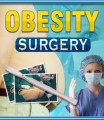Table Of Contents
Foreword
Chapter 1: Introduction
Chapter 2: History of Cupping
Chapter 3: Basics of Cupping
Chapter 4: Tools Of Cupping
Chapter 5: How To Perform Cupping
Chapter 6: Application of Cupping
Chapter 7: Benefits of Cupping
Chapter 8: Who Is Cupping Not Suitable For
Wrapping Up
Sample Content Preview
Chapter 2: History of Cupping
Synopsis
Cupping is an ancient traditional healing method used in China which dated back from the year 281 AD. This ancient medical practice was originally used by the Taoists in the imperial courts of that era.
Where It Originated
Although history has shown cupping to be used in other civilizations, its first use was documented by a practicing Taoist, alchemist, and a medicinal herbalist named Ge Hong.
Ge Hong was famous during his time as an accomplished healer and a trusted confidante of many high officials in ancient China. He successfully applied cupping to treat a variety of diseases which couldn’t be cured by conventional methods in his time.
Here’s a quick fact: Back in the olden days, animal horns were used for cupping, which gave rise to its name as the medicinal horn technique of healing.
Back in the Qing and Tang Dynasty, cupping has been used to treat pulmonary tuberculosis, moxibustion, common colds, back pains, knotted nerves and muscles, and arthralgia. It has also been used for promoting general health and wellbeing among patients who could afford it.
In the modern day China and elsewhere in the world, common glass cups or even fine plastic cups have been used to replace its ancestral animal horns and bamboo. The type of cups has also evolved over time to suit the patients’ needs.
Besides China, cupping has been also found to be used in deep East Asian regions, especially in Northern China, Japan, and the Korean peninsula. Certain areas such as the Middle East use a similar method known as “Wet Cupping”.
Today, cupping has also been implemented widely in eastern and western cultures through the process of globalization.
Chapter 3: Basics of Cupping
Synopsis
In this chapter, you will be exposed to the basics concept of cupping and how it can improve a patient’s health.
An Inside Look
The basic concept of cupping is by using locally applied suction to improve blood flow and facilitate healing. Suction cups are placed on the body of the patient by a trained practitioner and then heated with fire.
After heating, the rims of the cups are sealed and the heated cups create a partial vacuum after the cups cool off. This enables the cup to suck the skin, pulling in skin tissue and promoting blood flow. The concept is similar to acupuncture where “Qi” is draw to areas with poor blood or lymph circulation.
In another fireless technique, suction is created through hand pump and blood is collected. There are also modern pumps such as electromagnetic pumps which utilize the power of magnets and electricity to create suction. Collectively, this whole method of cupping is widely practiced and is known as “Dry Cupping”.
Another lesser used method, known as “Wet Cupping” has been used in the Middle East to a certain extent. The process is similar, but includes “bloodletting” or “drawing of blood” by making a superficial incision towards the skins before the suction process.
Cupping has been used extensively to treat a wide variety of diseases and symptoms either in combination with western medicine or stand-alone to relieve symptoms.
Chapter 4: Tools Of Cupping
Synopsis
Cupping has come a long way from its predecessors- Bamboo cups, animal horns, brass cups and clay pots. The type of cup used has evolved to suit the needs of the current society and expectations.
What Is Used
Today, a wide variety of cups has been used in the cupping process. The type of cup used also depends on the type of ailment to be treated.
Some of the common cups used include:
-Fire suction cup (the most common)
-Rubber cups
-Silicone cups
-Facial cups
-Biomagnetic cups
-Electric cups
The cups also come in different shapes and sizes for easy handling and for better targeting of the area to be suctioned. Sometimes, a special cupping torch is used to facilitate the heating of the cups.
Practitioners today also have improved their services in terms of health and hygiene by using sterile rubber gloves, blades wet cupping and alcohol swaps as a disinfectant. With the increase in healthcare standards, healthcare boards around the world are implementing guidelines to ensure the practice of health massages are regulated, safe and effective.
Ultimately, any tool used is effective as long as the practitioner is experienced in maximizing the potential of each tool. If the practitioner is not well trained, it doesn’t matter what tools you have, you won’t be getting a good session.
Other Details- 1 Ebook (DOCX, PDF), 23 Pages
- Ecover (JPG)
- File Size: 14,204 KB














